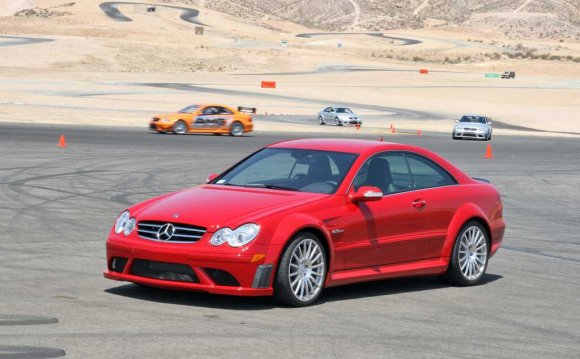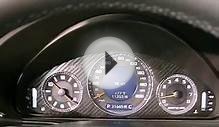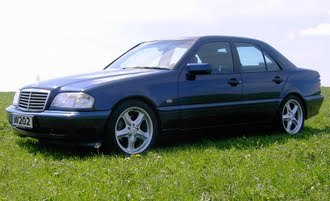
Those not arriving in Monte Carlo by the fashionable method of helicopter or 190-foot motor yacht must depend on a latticework of road tunnels bored through the solid rock bluffs sheltering this glittering tax shelter from the rest of the Riviera. Stomp the new C63 AMG's gas pedal in one of those dark shafts, and the quad tailpipes rip the air with the concussive blast of fresh gunpowder.
Not to be seen in America until April 2008 (but sampled in prototype form on some old rally routes behind Monte Carlo and at the Circuit Paul Ricard in nearby Le Castellet, France), the roaring, snorting, so-loud-it's-barely-legal-in-Europe C63 AMG has more than just a neck-prickling bark. Mercedes-Benz wants its littlest AMG to bite BMW right in its M3s.
A 451-hp, 6.2-liter four-cam 32-valve V-8 Vaseline-fit into the small C-class engine bay is a good start. About 8.5 pounds per horsepower make this roughly 3800-pound sedan do mid-four-second warps to 60 mph, says AMG. The seven-speed paddle-operated automatic with full rev-till-it-sputters manual control delivers lightning upshifts and, by means of carefully staging the clutching and declutching of the planetary gearsets, allows crisp throttle blips during downshifts.
And the best proof that AMG's divining rod is indeed pointing in new directions is a suspension comprehensively dialed in by AMG to (finally!) challenge a BMW for turn-in response, body control, and ride livability.
The C63's timing is propitious. Long a home for heavyweight cruise missiles, AMG's tent has generally been avoided by the younger cut-and-thrust crowd typically found in M3s. BMW sold 3841 M3s in 2006 in the U.S., split almost evenly between coupes and convertibles. The C63 hopes to lure about 2000 U.S. customers per year, and it will have to do it against the V-8-powered M3.
Hence, except for the CLK63 Black Series, the C63 is more comprehensively Godzilla'd than previous AMGs. Young guys like to show it when they blow it, and most of the parts numbers forward of the windshield are unique to the C63, including flared steel fenders with fish-gill slots and the bulging aluminum hood.
With its four-inch bores, the V-8 sits two inches closer to the fire wall than the C's base 3.5-liter V-6 to help axle-weight distribution land at 54/46. The V-8 weighs about 80 more pounds than the V-6, so new impact beams manage the changed crash energy, and a stiffened subframe bears the extra mass.
RELATED VIDEO




 The Mercedes-Benz C-Class is a compact executive car produced by the Mercedes-Benz division of Daimler AG. First introduced in 1993 as a replacement for the 190 range (W201, also nicknamed “Baby-Benz”), the C-Class was the smallest model in the marque's lineup until...
The Mercedes-Benz C-Class is a compact executive car produced by the Mercedes-Benz division of Daimler AG. First introduced in 1993 as a replacement for the 190 range (W201, also nicknamed “Baby-Benz”), the C-Class was the smallest model in the marque's lineup until...








